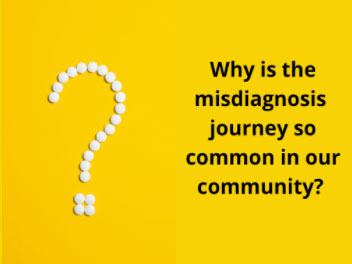Solving the problem of misdiagnoses
APBD is a complex multi-system condition to diagnose for health professionals, making the diagnostic journey even more of a challenge for patients. As such, it is frequently under-recognized and often misdiagnosed.
In fact, a study by Dr. Mark Hellman and Dr. Or Kakhlon showed that of 30 patients diagnosed between 1991 and 2013, all 30 patients were initially misdiagnosed.

What can you do?
APBD Mimics Other Diseases
This ultra-rare neurodegenerative genetic disease is characterized by central and peripheral nervous system symptoms that progress over time and mimic a range of other neurodegenerative diseases, including:
- multiple sclerosis
- peripheral neuropathies
- hereditary spastic paraplegia
- Charcot-Marie-Tooth disease
- ALS
Why do misdiagnoses occur?
Physicians’ unfamiliarity with the typical clinical and imaging features of APBD is the main reason for misdiagnosis. Misdiagnoses result in patients receiving unnecessary investigations and potentially harmful therapeutic interventions.
Six steps you can take:
We are working diligently to address the factors contributing to misdiagnoses, under-diagnoses, diagnostic delays, and mistreatment with integrated awareness-building, educational, and collaborative research programs.
